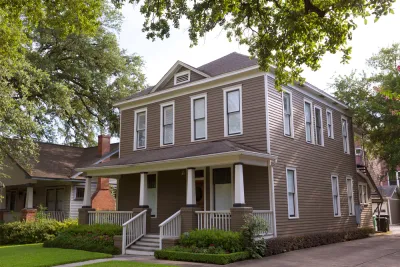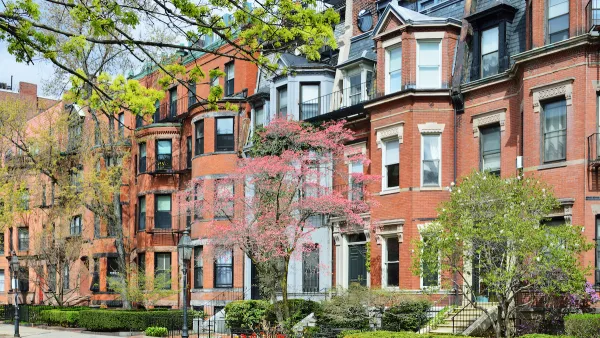By designating that "family" refer to a specific set of ties, many zoning codes make it difficult for "functional" families without those ties to find a place to live.

"Today, when courts ask 'what makes a family?' they often look beyond blood, marriage, and adoption to see if people have made other meaningful, familial commitments that qualify for the obligations and benefits that family law provides," writes Kate Redburn. In many cases of family law, cohabitation can be an important part, "if not the determining factor," in deciding whether a given group of people constitutes a family.
Redburn argues that many local zoning provisions discriminate against "functional" families in favor of "formal" ones by setting strict limits on the number of "unrelated" people who can co-habitate in certain kinds of housing.
The 1974 Supreme Court case Village of Belle Terre v. Boraas gave the nod to that practice by ruling that municipalities can differentiate between related and unrelated families. But Redburn traces the origins of the problem to the mid-1960s, when "fears of the family in crisis" led more localities to zone in favor of formal nuclear families. That practice coincided in many cases with formalized neighborhood segregation and the growing preponderance of single-family zoning.
"By uncoupling the definition of family from residential limits, all kinds of chosen families—foster families, communes, students, seniors, and group homes—would be able to live together legally," Redburn writes.
FULL STORY: Why Are Zoning Laws Defining What Constitutes a Family?

National Parks Layoffs Will Cause Communities to Lose Billions
Thousands of essential park workers were laid off this week, just before the busy spring break season.

Retro-silient?: America’s First “Eco-burb,” The Woodlands Turns 50
A master-planned community north of Houston offers lessons on green infrastructure and resilient design, but falls short of its founder’s lofty affordability and walkability goals.

Delivering for America Plan Will Downgrade Mail Service in at Least 49.5 Percent of Zip Codes
Republican and Democrat lawmakers criticize the plan for its disproportionate negative impact on rural communities.

Test News Post 1
This is a summary

Test News Headline 46
Test for the image on the front page.

Balancing Bombs and Butterflies: How the National Guard Protects a Rare Species
The National Guard at Fort Indiantown Gap uses GIS technology and land management strategies to balance military training with conservation efforts, ensuring the survival of the rare eastern regal fritillary butterfly.
Urban Design for Planners 1: Software Tools
This six-course series explores essential urban design concepts using open source software and equips planners with the tools they need to participate fully in the urban design process.
Planning for Universal Design
Learn the tools for implementing Universal Design in planning regulations.
EMC Planning Group, Inc.
Planetizen
Planetizen
Mpact (formerly Rail~Volution)
Great Falls Development Authority, Inc.
HUDs Office of Policy Development and Research
NYU Wagner Graduate School of Public Service





























